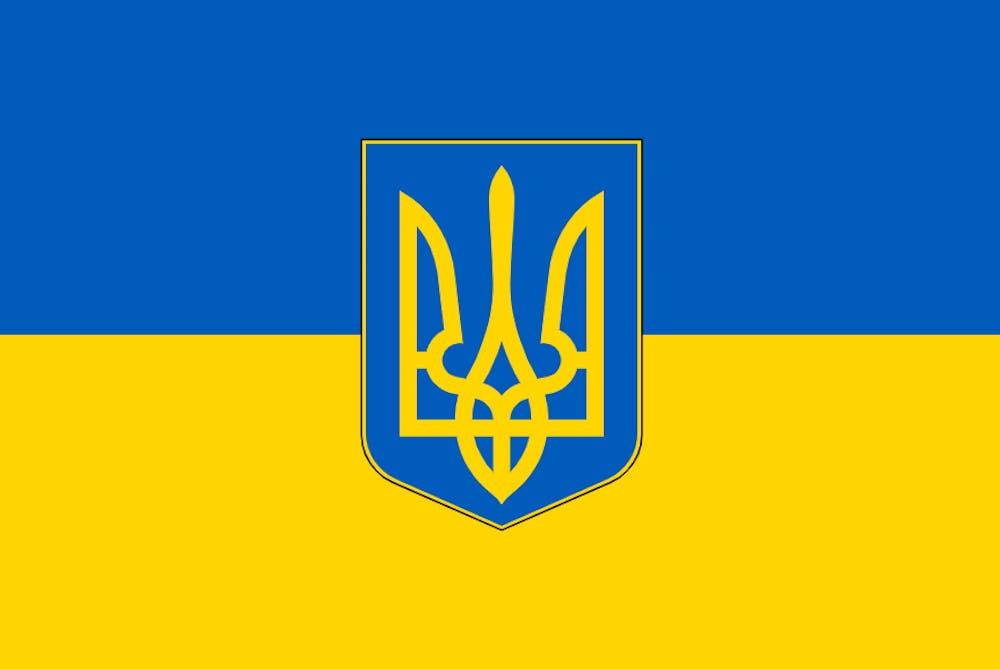Hopkins Medicine announced a $4 million donation of medical supplies to support humanitarian efforts in Ukraine earlier last month following the military invasion by Russia.
The donation, coordinated with the University of Maryland Medical System, consists of airway aspirators, medical air compressors, beds, oxygen concentrators, positive pressure ventilators, face masks, respirator kits and other supplies.
According to an interview with Dr. Lisa Ishii of the Johns Hopkins Health System in the Capital News Service, some of the supplies were acquired during efforts to stockpile materials during the pandemic.
Ishii did not respond to The News-Letter’s request for comment by press time.
Senior Diana Bershadsky, whose parents were born in the Ukrainian city of Vinnytsia, expressed that she was glad to see Hopkins taking action in an interview with The News-Letter.
“As a medical university, it was very uplifting to see that Hopkins took a step forward to help people in Ukraine that have been injured by the war and feel the effects of the conflict,” she said.
Shipment and distribution of donated equipment is overseen by Project C.U.R.E., an international nongovernmental organization focused on the distribution of medical supplies to over 135 countries. Project C.U.R.E. currently holds over a 94% confidence rating on Charity Navigator with upward of 97% of donations going to relief work.
Associate Professor of International Health at the School of Public Health Courtland Robinson explained that an efficient donation should follow the World Health Organization (WHO) guidelines for medicine donations.
While Robinson declined to comment on Hopkins’ recent donation to Ukraine, Robinson noted that for all donations the most important principle is to do no harm. The WHO guidelines state that medical donations should be based on expressed need, be in accordance with government regulations of the recipient and coordinated with and agreed upon by both sides with no double standard in quality.
“We've seen, sadly, many instances of inappropriate medicines, newly expired or actually expired medications, equipment that can't work, people that aren't trained to use it,” Robinson said. “An awful lot of really unfortunate and problematic contributions could have been avoided if people had made sure what the needs actually are.”
Associate in the Department of International Health at the School of Public Health and founder of Health Research Toolbox Namrita Singh helped establish a team working on a cognitive behavioral therapy mental health intervention in Ukraine from 2015 to 2018, a project that is still ongoing.
While Singh similarly did not comment on the University’s specific donation, she echoed Robinson’s point, saying that while it may be easiest to use top-down channels to deliver aid, they are not the most effective.
“One of the most important things, when we do humanitarian aid well, is that we are coordinating directly with local organizations and people on the ground,” she said in an interview with The News-Letter. “My work in health equity overlaps with that perspective, as an equitable approach to humanitarian relief is not a top-down one.”
Kevin Sowers, president of the Hopkins Health System and executive vice president of Hopkins Medicine, explained the motive behind the donation in a statement.
“At the core of who we are is a group of people who seek to honor and safeguard each human life,” he said. “These medical supplies are not meant just to preserve and protect physical bodies but also serve to honor the human spirit of all Ukrainians who are fighting so valiantly to protect their loved ones and their country.”
Singh also discussed the importance of recognizing and supporting local leaders who are innovating during times of crisis to benefit their community. In particular, she spoke of her colleague Sergiy Bogdanov, director of the Center for Mental Health and Psychosocial Support at the National University of Kyiv-Mohyla Academy, who, despite fleeing the country, continues to coordinate mental health projects with those who remain.
“An obstacle we’ve seen over and over in the area of humanitarian relief is, whether we have good intentions or not, there is an imposing of aid... What ultimately serves communities that are most affected is supporting local innovations,” she said. “We need to listen to what people are already doing and direct dollars to really amp up and leverage those assets.”
Singh notes that understanding the changing nature of a conflict and the resources needed to address it is difficult and that donating through large organizations can be appropriate so long as those organizations are responsive to conditions on the ground.
The Homewood Campus Student Government Association, Homewood Campus Graduate Representative Organization, School of Medicine Graduate Student Association, School of Public Health Student Assembly and School of Nursing PhD Student Organization compiled a list of organizations to donate to.
Likewise, Bershadsky called upon the importance of individual donations, urging students to help support the Ukrainian cause and relief efforts.
“There are a lot of really amazing, reputable organizations doing really good work to help the civilians being affected by the conflict,” she said. “Any donation really does help.”
Bershadsky mentioned her desire to see more students discussing the conflict and its ramifications, noting that while there are organizations holding fundraisers and bringing attention to the conflict, the student body at large hasn’t engaged with the conflict following the initial vigil held on March 5.
“At the same time, there's only so much we can do. We’re thousands of miles away. We get to see it on our phones all the time — the disaster porn, all the journalists sending these terrible images — but there really is only so much we can do which is awareness and monetary aid,” she said. “I feel that Hopkins has done a pretty good job of that.”





